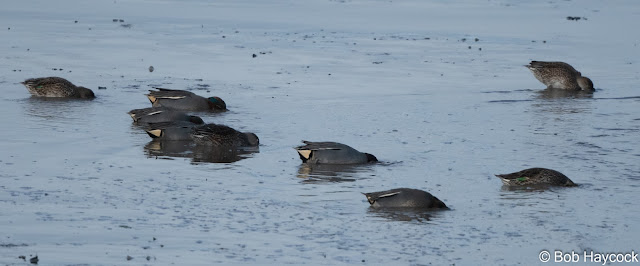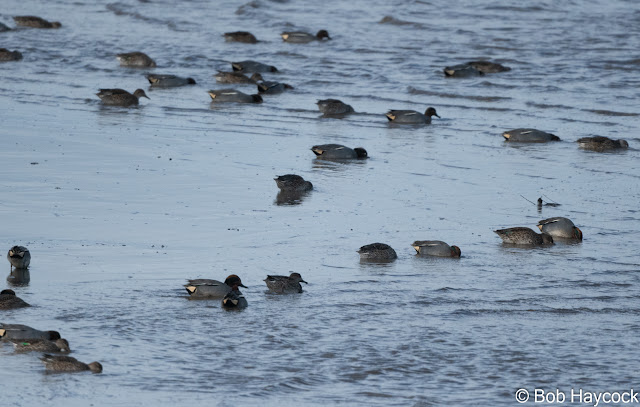This morning’s WeBS counts around the Carew/Cresswell and Daugleddau/Landshipping areas produced relatively modest numbers of waterfowl. Most of the wigeon appear to have left with only 53 noted on the Carew/Cresswell and 22 at Landshipping. Teal numbers were higher, with c.175 (most of them at New Shipping) and 182 at Landshipping. 75 shelduck in the Carew/Cresswell was a fairly low total. A single great crested grebe was feeding in the Daugleddau channel opposite Sam’s Wood.
 |
| Some of the 182 teal at Landshipping Quay, earnestly feeding in the shallows (possibly fattening up prior to migration?) |
Numbers of curlew were quite low (56) as were those of redshank (<30) which was the lowest February WeBS total for redshank since 2018. Only 2 greenshanks were seen today and there were no grey plovers at their usual roost site. A small flock of c.90 lapwings moved around, as they often do, between the Cresswell and Carew Rivers.
Numbers of other waders were a bit better, 83 oystercatchers roosted at Lawrenny but the total here was lower than last month. There was no sign of a colour-ringed bird from the Gann that was here in January. About 400 dunlin were at New Shipping and at least 80 black-tailed godwits in Radford Pill. A probable 2CY male peregrine was hunting over the Carew River, scattering the teal and dunlin for a while.
Over the last few weeks, we have noted reasonably large numbers of winter thrushes (mostly fieldfares) feeding in damp pasture between Tedion Mountain and Curly Wells Bridge. Today, a bit further south, a flock of at least 500 fieldfares (possibly the same birds?) was feeding in grassland and/or resting in trees between Deal Cross Roads and Newton Lane. Numbers or redwings with them were fairly small, probably less than 50.
